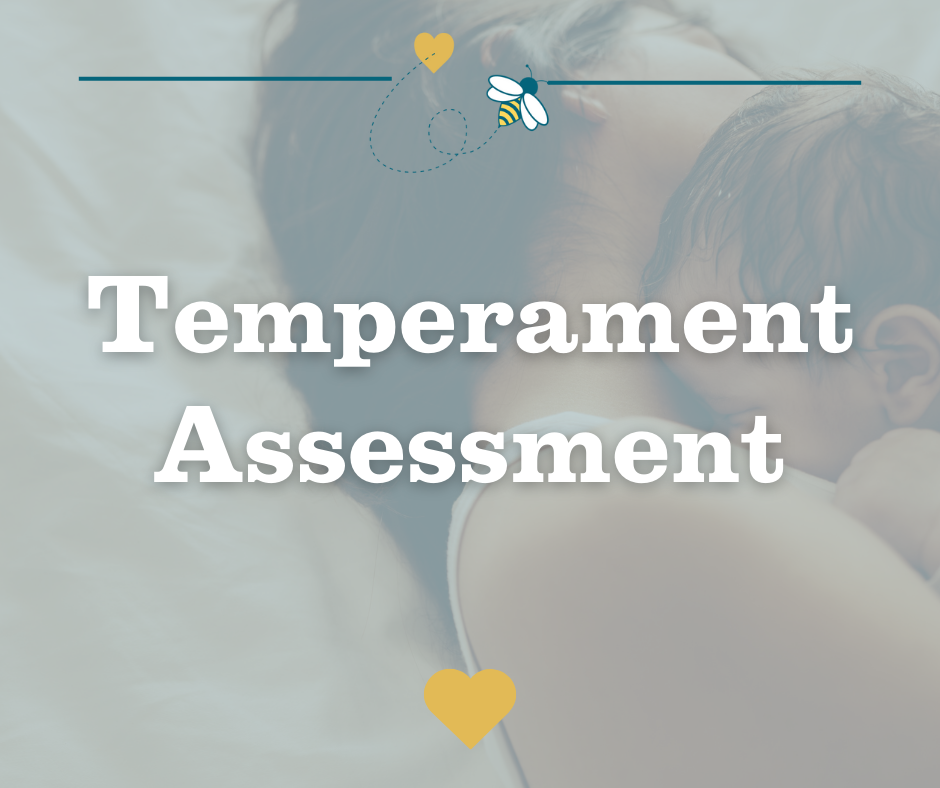Navigating Baby Temperaments: A Guide for Parents

Welcoming a new baby into the world is an exciting and joyous occasion, but every parent soon realizes that each infant has unique characteristics and temperaments. Understanding your baby’s temperament can be a game-changer in your parenting journey, allowing you to tailor your approach to their specific needs.
In this blog post, we’ll explore the fascinating world of baby temperaments and provide insights on how identifying and adapting to these temperaments can lead to a smoother parenting experience.
The Spectrum of Baby Temperaments
Recent studies suggest that only 40% of babies exhibit what is commonly referred to as an “easy or flexible temperament.” These little ones seem to radiate easy-going, displaying adaptability to new situations and caregivers. With more regular eating and sleeping routines, these babies bring a sense of ease to their parents.
On the flip side, 10% of babies fall into the category of “high needs or active temperament,” formerly known as difficult (a word we do not agree with). These infants face challenges adjusting to new environments, often experiencing intense reactions and maintaining a hard-to-read mood. While they may demand more care and nurturing, these babies also possess admirable qualities such as assertiveness, persistence, and decisiveness.
Another 5-15% of babies are labeled as “slow to warm up or cautious.” These infants tend to withdraw or be slow to adapt to new situations, showcasing a lower activity level and a generally negative mood. Often mistaken for shyness or sensitivity, these babies require a more patient and understanding approach.
The remaining 40% of babies exhibit a combination temperament, reflecting a mix of the aforementioned traits. This diverse group challenges parents to navigate through a spectrum of needs, requiring a flexible and responsive parenting style.

The Zzz Hive Stance:
While we understand researchers need to label terms of ‘easy’, ‘high needs’, and ‘difficult’, we understand that these labels further the misunderstandings of a good and bad baby. We strive to think for us to use this assessment to learn how to parent with your baby instead of against them. You don’t have to label your baby at the end of this assessment
Learning that you may have a baby who has some sensitivities to certain situations can help tremendously when planning your day and outings.
Parenting and Temperament Matching
One crucial aspect often overlooked by parents is the potential mismatch between their temperament and that of their baby. Understanding your temperament can greatly aid in developing effective strategies for parenting, irrespective of your baby’s temperament.
If you find yourself resonating with the calm and adaptable nature of an easy temperament, parenting may initially feel like a breeze. On the other hand, if your baby falls into the high needs or is slow to warm up categories, recognizing and acknowledging these differences will set the stage for a more empathetic and patient approach.
Easy: These babies have regular rhythms, are approachable, highly adaptable, have positive moods, are easily distractable, low sensitivity
Slow-to-warm up: you will see lots of traits that are very cautious or slightly change if given the right environment. They may have the initial reaction of withdrawal but after a couple of minutes become approachable. May have high distractibility, low persistence, and may be irregular with their rhythms.
Active or high needs: These babies may have very active needs, need more stimulation to smile, their adaptability may be low and may have irregular rhythms (not schedule)
Creating Strategies for Success
Identifying and understanding your baby’s temperament is the first step, but the real magic happens when you tailor your parenting strategies accordingly. For an easy-tempered baby, maintaining routines and providing a positive environment can enhance their well-being. High-needs babies benefit from additional care and nurturing, while slow-to-warm-up babies thrive in a supportive and gradual introduction to new experiences.
If your baby needs very high activity then we know a bedtime routine needs to consist of movement but what tool you use for movement will be dependent on both your needs and your baby’s to make a sustainable, for example using a rocking chair instead of standing and bouncing.

In Conclusion
The world of baby temperaments is diverse and fascinating. As a parent, recognizing and embracing your baby’s unique characteristics can lead to a more fulfilling and less stressful parenting journey. Whether your little one falls into the easy, high-needs, slow-to-warm-up, or combination temperament, adapting your parenting style to their needs will foster a stronger connection and create a harmonious environment for both parent and child.

What to do next?
-
- Download Your Free Baby Temperament Assessment Below
-
- Tailor Your Parenting Approach: Armed with the knowledge of your baby’s temperament, discover personalized strategies to enhance your parenting style. Whether your baby has an easy, high-needs, slow-to-warm-up, or combination temperament, adapt your approach for a smoother and more connected journey.
-
- Join the Conversation in The Zzz Hive: Share your experiences and insights with our community. Connect with other parents who are on a similar journey and exchange tips on navigating the diverse world of baby temperaments. Your story might be just what another parent needs to hear. Also get our library of other topics on infant sleep, parental wellness, infant brain, and more.
Sources:
https://childcareta.acf.hhs.gov/infant-toddler-resource-guide/infanttoddler-care-providers/planning-infants-and-toddlers-1
https://www.ecmhc.org/temperament/

Get Temperament Freebee
Sign up to get the assessment to understand you and your baby's temperament.
Thank you!
You have successfully joined our subscriber list.
